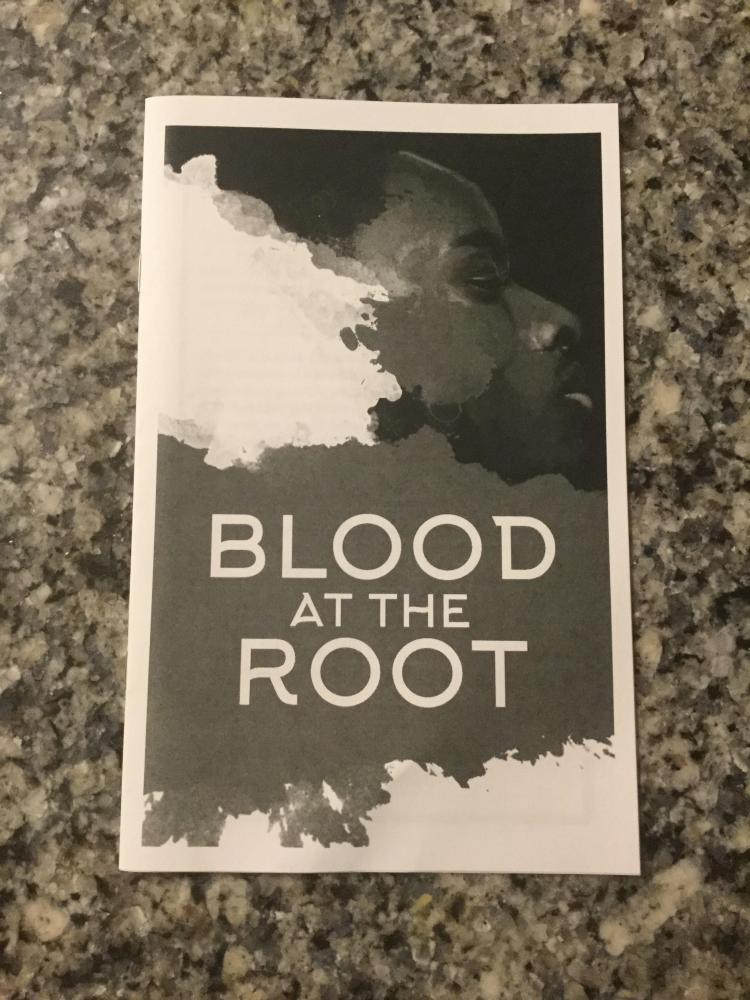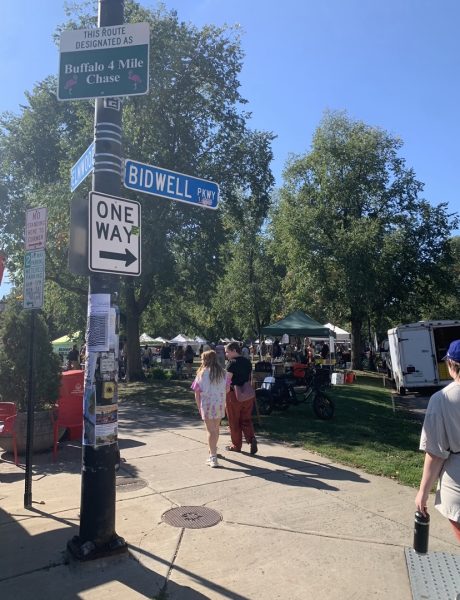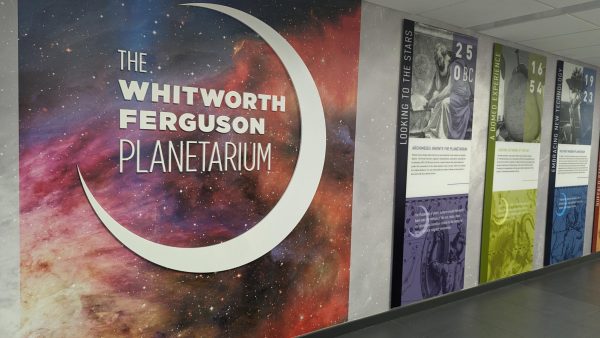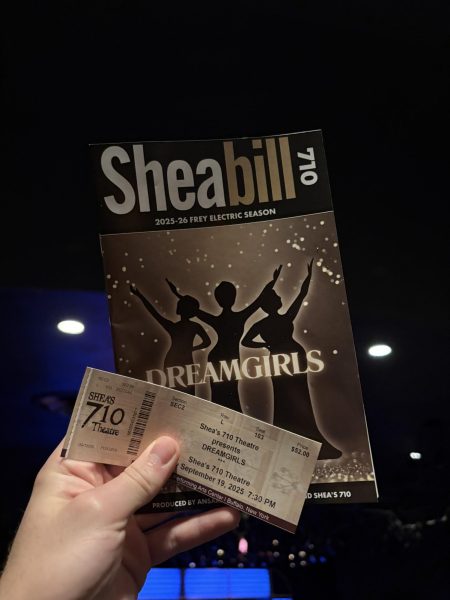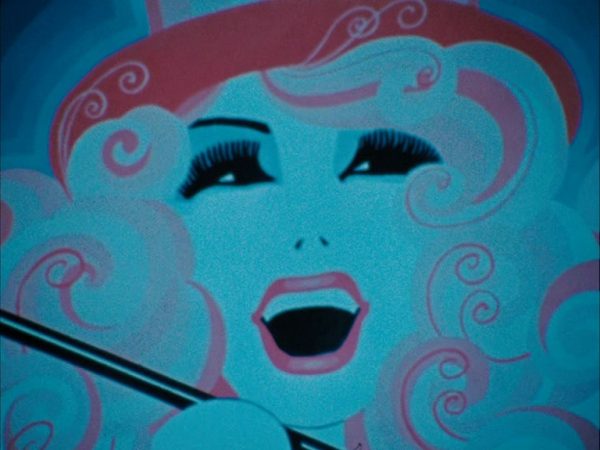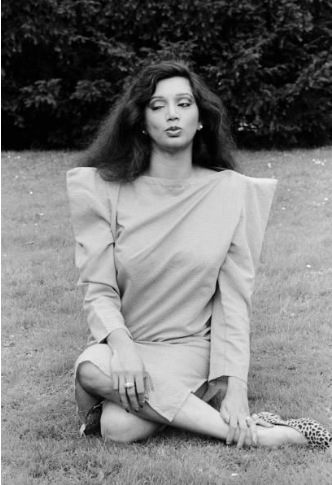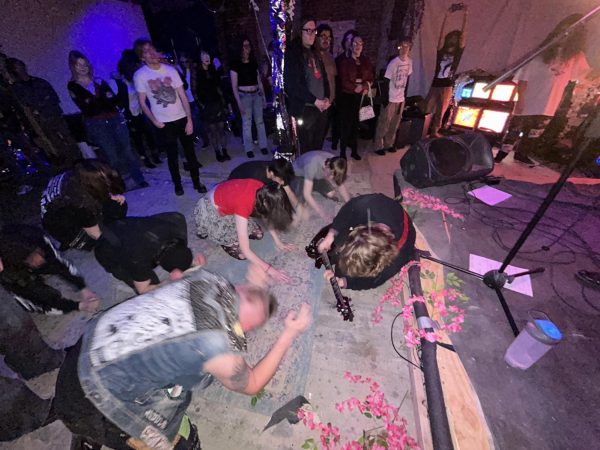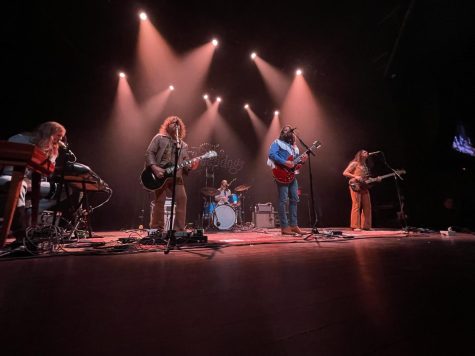A Review of Casting Hall’s Production of Blood at the Root
“Southern trees bear strange fruit. Blood on the leaves and blood at the root. Black bodies swinging in the southern breeze. Strange fruit hanging from the poplar trees.”
These lyrics are the inspiration for the first production of the semester at Buffalo State, Blood at The Root. The play was written by Dominique Morisseau and was directed by Aaron Moss.
Director Aaron Moss said that despite using a minimalist set, the play defies the boundaries of the space it occupies. The plot of the play comes from the Jena Six incident that occurred in 2006 in which six black students from Jena high School in Louisiana were arrested after beating up a white student.
The play transcends a history of indifferent race relations and delves into much of the racial issues that plague the country today. One odd thing to notice about the play was that despite the play being set in the fall, a heat wave added to the drama surrounding the school. It also provides an underlying metaphor for the increasing racial tension of the school.
Blood at the Root centers on the racial divide of the fictional Cedar High School and how the tensions come to a head when a “prank” divides the school and sets a group of students on a course with necessary change. The protagonist of the play, Raylynn, is a young black woman who is going to be the first black student to run for class president. Along with her is her brother De’Andre who is arrested after getting into an altercation with a new white transfer student, Collin.
Another source of tension in the play is between Toria, who writes for the school newspaper, but her articles about serious issues that affect students are deemed “too inappropriate” by the paper’s editor, Justin. Finally, is the character of Asha whose father married a black woman that showed her the better side of life. Now Asha adapts the mannerisms of the black community.
Along with the dialogue of the play, photos of recent protests a poster for the Netflix documentary 13th are shown to help the play associate with the current day and age. A major part of the production is the tree that is just a stump in the middle of the set. The tree’s importance is threefold.
First, it is a means to break the status quo of white students only hanging out with white students. The protagonist of the play, Raylynn, is going to be the first black student to run for class president and uses the tree as a way for her to stand out to the crowd. Much of the play revolves around a defiance for social rules and unspoken racial hierarchies.
Second, the tree is a historic symbol. When a group of unknow students play a “prank” in which nooses are tied from the branches of the tree. The title of the play stems from lyrics of a Billie Holliday song called Strange Fruit. When Holliday refers to strange fruits, she meant black men being lynched and left for dead on the tree branches.
Third and finally the tree serves as a prison for the students. The tree keeps reminding the students about the way the school is self-segregated but equal. All the students are able to co-exist in the school so long as they associate with people of their own race.
Although the play goes into heavier issues like segregation, it also talks about not fitting in by being a light skinned black person, an issue that Justin struggles with throughout the play. The cast of the play do this play justice by creating a perfect space for America’s racial grievances to be aired. However, the play would not be tied together if it wasn’t for the direction of Aaron Moss and the choreography Naila Ansari Blood at the Root is a must-see play for all.


